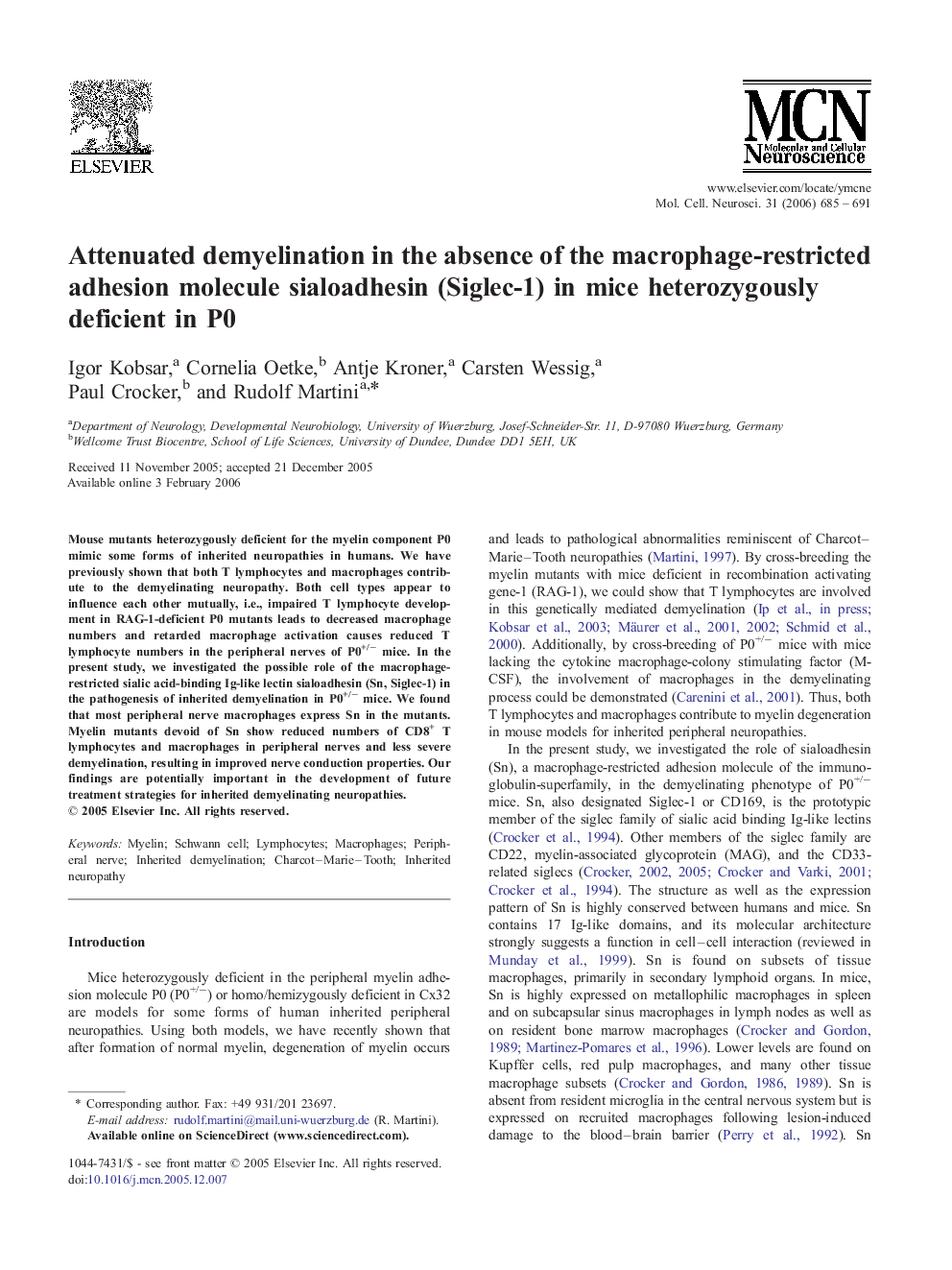| Article ID | Journal | Published Year | Pages | File Type |
|---|---|---|---|---|
| 2199487 | Molecular and Cellular Neuroscience | 2006 | 7 Pages |
Mouse mutants heterozygously deficient for the myelin component P0 mimic some forms of inherited neuropathies in humans. We have previously shown that both T lymphocytes and macrophages contribute to the demyelinating neuropathy. Both cell types appear to influence each other mutually, i.e., impaired T lymphocyte development in RAG-1-deficient P0 mutants leads to decreased macrophage numbers and retarded macrophage activation causes reduced T lymphocyte numbers in the peripheral nerves of P0+/− mice. In the present study, we investigated the possible role of the macrophage-restricted sialic acid-binding Ig-like lectin sialoadhesin (Sn, Siglec-1) in the pathogenesis of inherited demyelination in P0+/− mice. We found that most peripheral nerve macrophages express Sn in the mutants. Myelin mutants devoid of Sn show reduced numbers of CD8+ T lymphocytes and macrophages in peripheral nerves and less severe demyelination, resulting in improved nerve conduction properties. Our findings are potentially important in the development of future treatment strategies for inherited demyelinating neuropathies.
